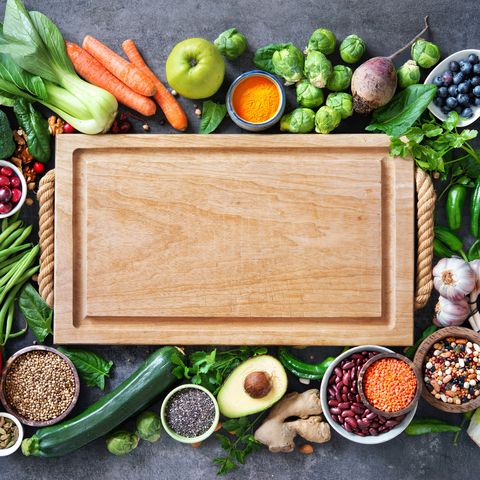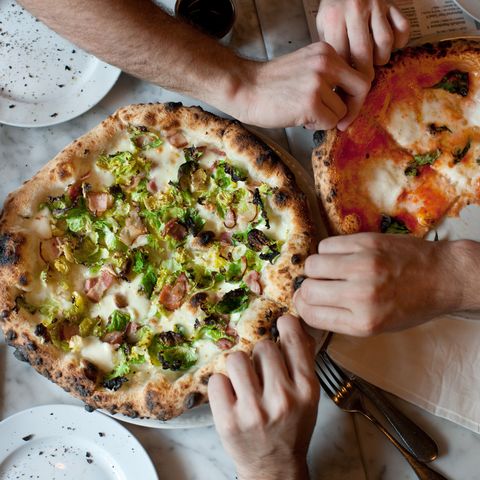
Fad diets can spread like a virus. Only instead of operating via germ-based transfer properties, diets spawn by way of disbelief.
“Wait, you can’t eat any sugar on Whole30?”
“How much fat are you supposed to eat on keto? Really?”
“Is the Carnivore Diet for real?”
The trend seems to go something like this: The wilder the “rules” of the diet, the more people talk about those wild rules, and the stickier the diet becomes. (That is, until people try the diet, fail, and then don’t talk about it anymore.)
Unfortunately, the fervor of fad diets also makes it difficult for easy, common-sense eating strategies to surface and sustain.

Subscribe to Men’s Health
SHOP NOW
That might be why something like the 80/20 approach to eating well, though a lifestyle strategy championed by dietitians, has been unsung for so long.
There are no wild rules to 80/20. There are no complex detox periods or “acclimation” stages. There’s nothing you can’t eat. It’s more of a guiding principle of better eating.
And the 80/20 approach to eating may do wonders for your waistline too.
What is the 80/20 approach to eating?

AlexRaths
The 80/20 eating strategy is where you devote 80 percent of your efforts toward eating healthfully and the other 20 percent toward not worrying about eating healthfully.
Here’s how that breaks down.
Eat 80 percent of your diet in whole and minimally processed foods that you like.
“Whole” foods are foods that haven’t undergone a ton of processing and largely have one ingredient on their ingredients list. Examples: beef, salmon, eggs, milk, peanuts, sunflower seeds, apples, corn on the cob, potatoes, and black beans.

Thomas Barwick
With packaged foods, each additional ingredient signals an extra step in processing, which may have stripped away some of the good stuff. And often, to make up for lost flavor, food manufacturers pump processed foods with sugar and fat. These foods also tend to be higher in calories. Eat too many calories and you’ll likely gain weight.
Note the important clause “that you like.” Eating in accordance to 80/20 doesn’t mean that you have to eat healthful foods you hate.
Eat 20 percent of whatever you want.

Michael Berman
Consider this your breathing room; your gut-check for unattainable dietary “perfectionism.” But whatever you call it, don’t call it your reward. This isn’t the slice of cake you’re allowed to enjoy after suffering through mixed greens salads all week.
This 20 percent merely helps you keep your sanity intact by allowing you to continue to enjoy the foods you enjoy—without making them a significant part of your diet.
You can choose to disperse this 20 percent however you see fit. It can be in the form of small indulgences every day, or you can save up for a bigger meal.
Why does the 80/20 approach to eating work?

Tara Moore
Simply put, it’s realistic. And flexible to how you actually live.
“The results you get from what you put in your body don’t come from what you do some of the time, but rather what you do most of the time,” says Chris Mohr, Ph.D., R.D., co-owner of Mohr Results, a health and nutrition consulting company.
In fact, Mohr applies the 80/20 approach to his own life.
“And ‘most’ of the time for me is about 80 percent of the time, allowing 20 percent for what I call a ‘conscious indulgence,'” he says. For Mohr, that could be a night out with friends with a couple drinks or ordering a dessert.
“The key is to not allow these conscious indulgences to bleed into the rest of the day or the next day, but rather enjoy them occasionally and then get back to fueling your body with quality nutrition,” he says.
“Nothing else in your life is all-or-nothing—and nutrition doesn’t have to be either.”
Source: Read Full Article